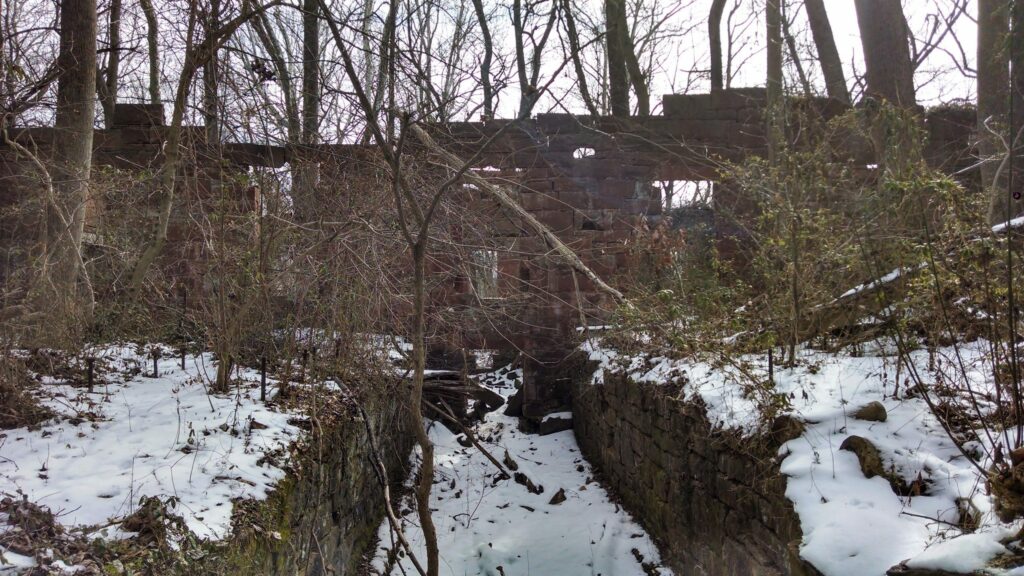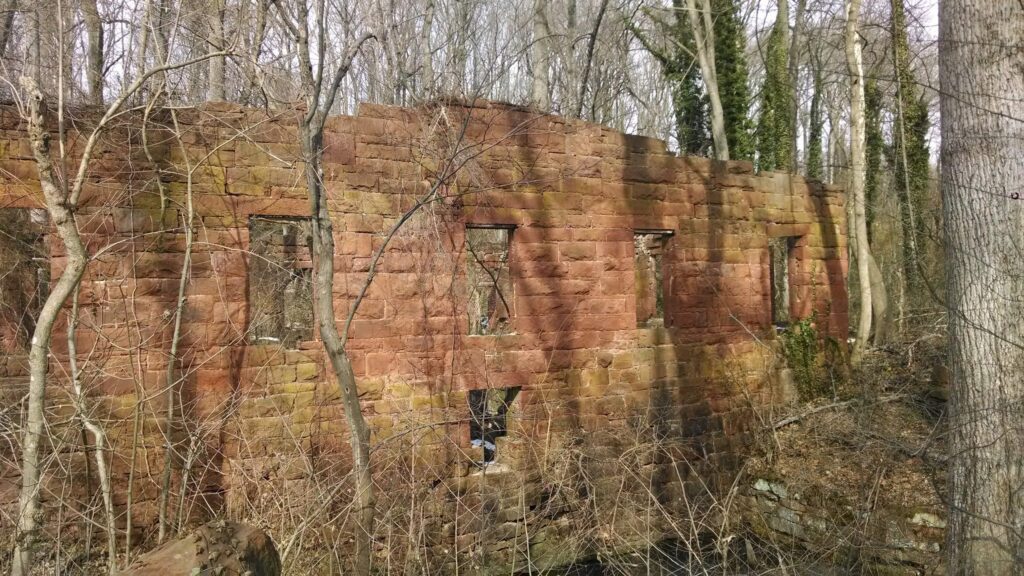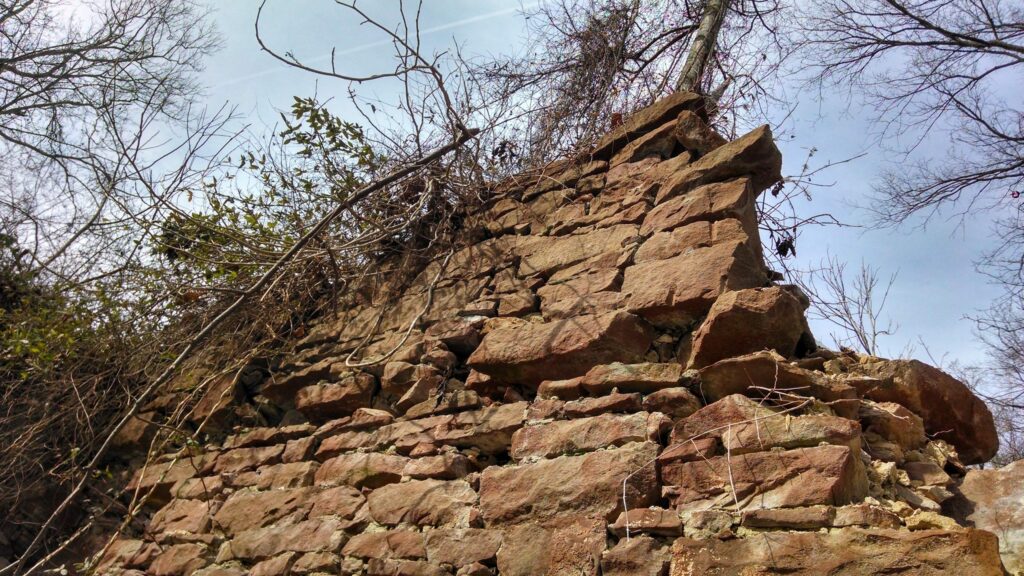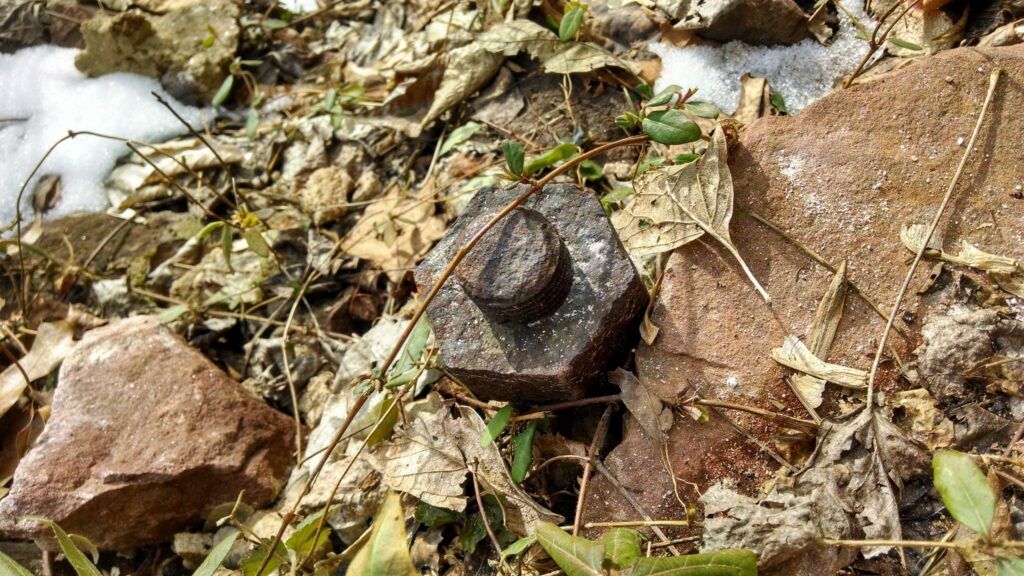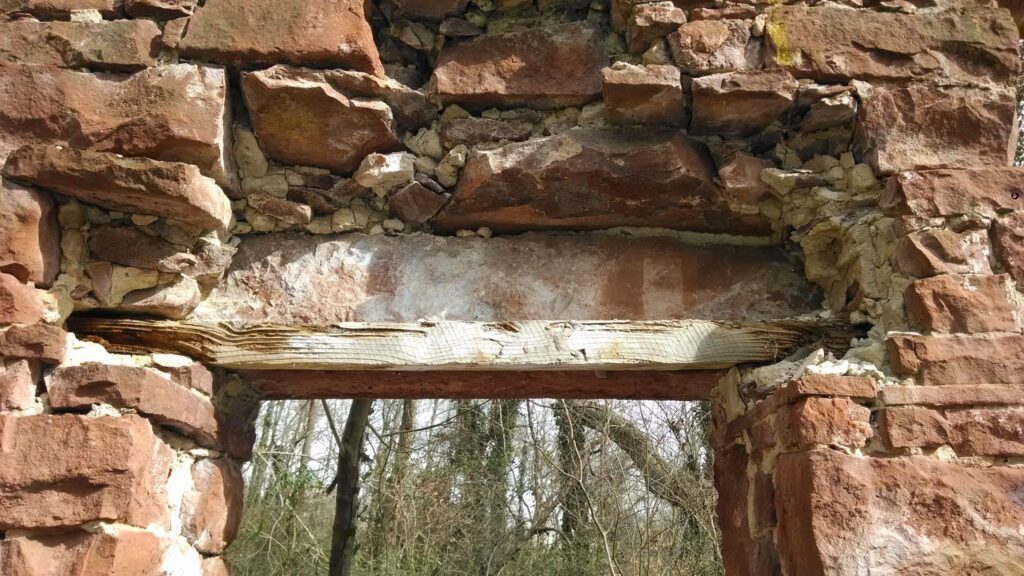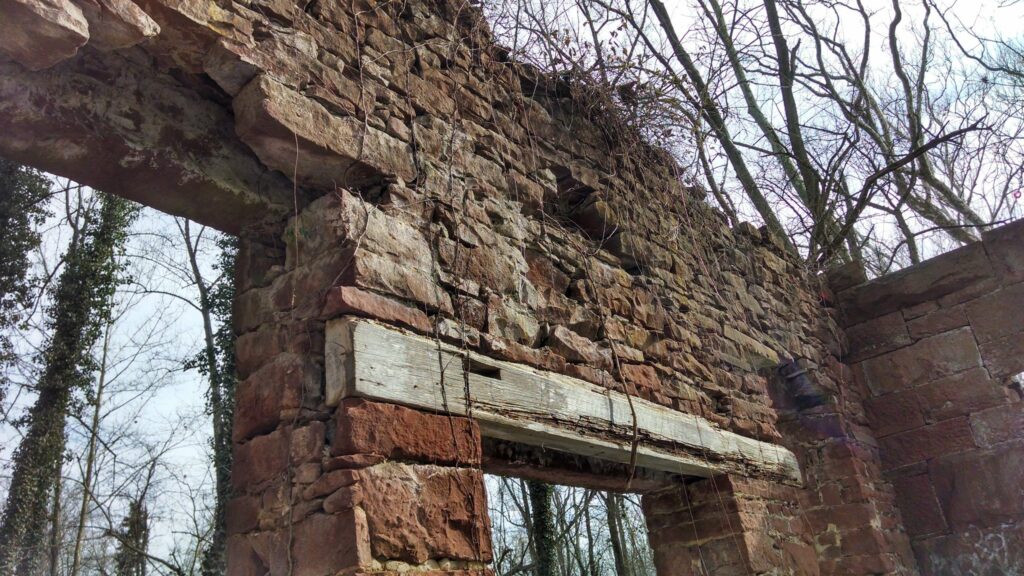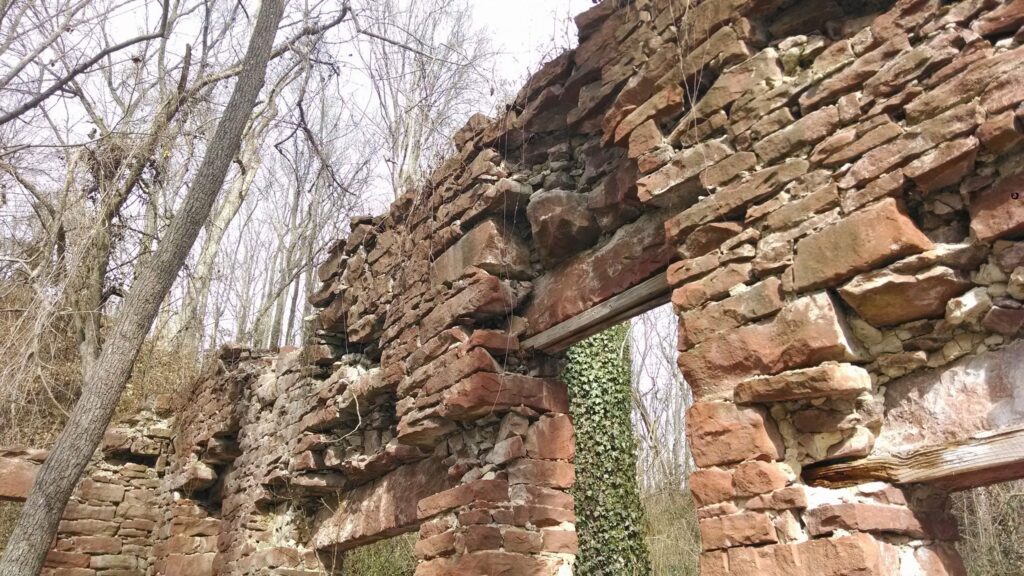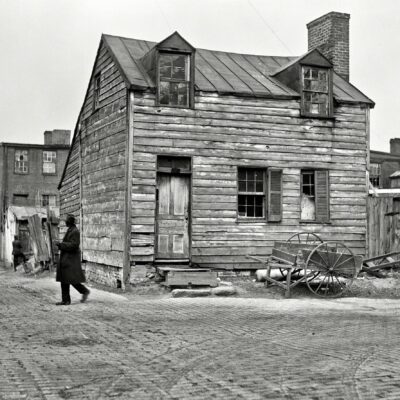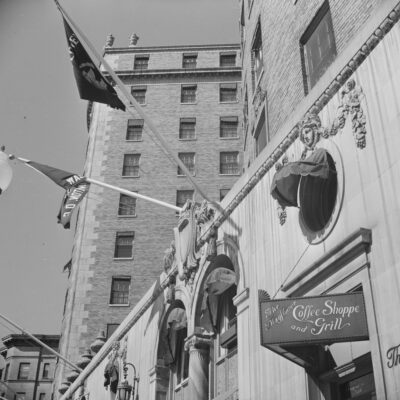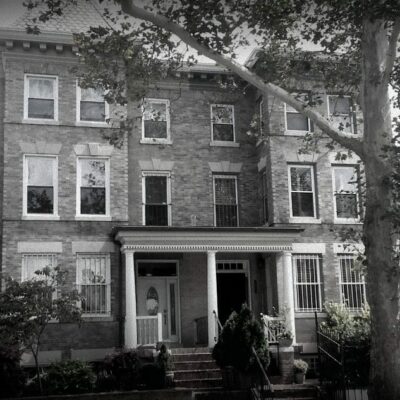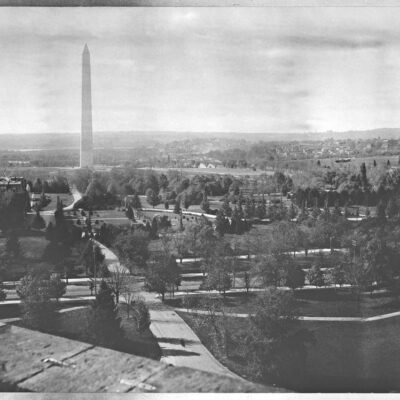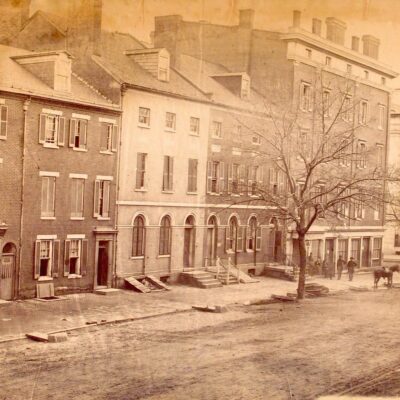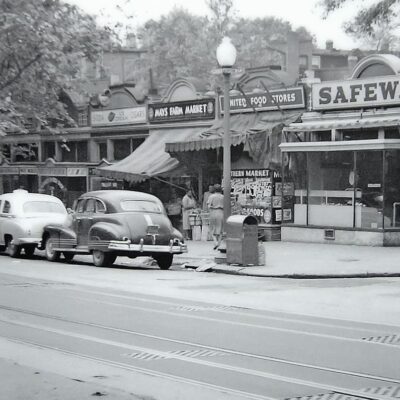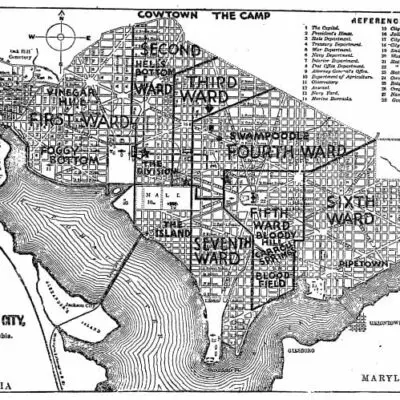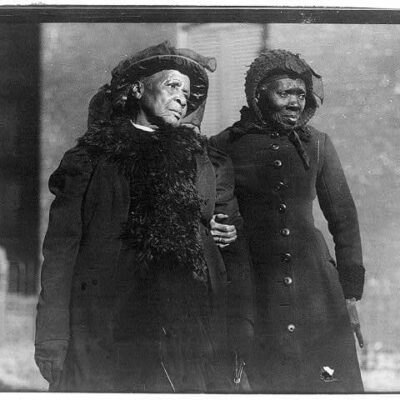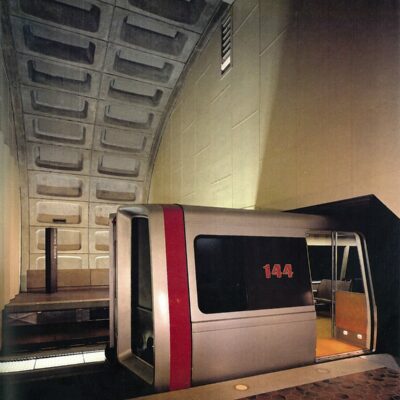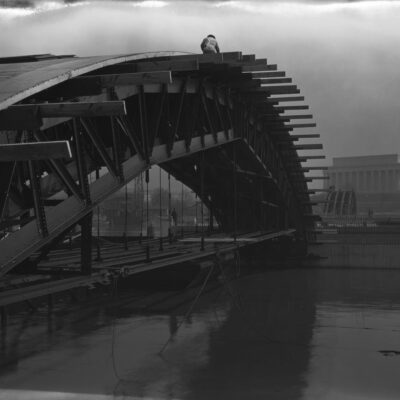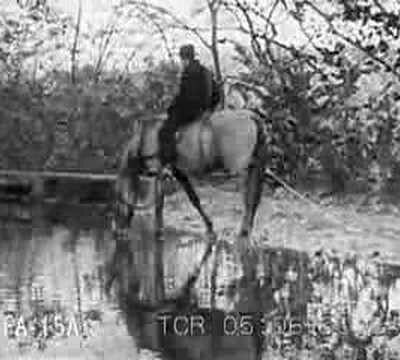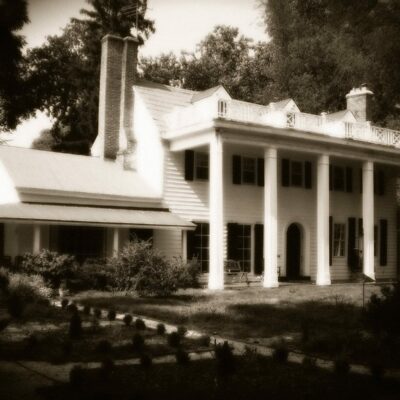If you’ve read GoDCer Garrett Peck’s book, then you’re familiar with the Seneca Quarry and the important role it played in building our nation’s capital, Washington DC. Once I learned about this abandoned Potomac River quarry hidden in the woods along the Chesapeake and Ohio Canal National Historical Park, I knew I had to check out these ruins west of Seneca Creek. Let me tell you, wandering through the forest and suddenly coming upon the towering remains of the old Seneca Sandstone Company stone cutting mill is an awe-inspiring experience.
We may not have ancient Roman ruins here in Montgomery County, Maryland, but we do have some fascinating old Seneca Mill and Quarry ruins that tell the story of our city’s past. The remains of the Seneca Quarry mill is one of these hidden gems that you need to visit, preferably before spring when the surrounding brush and vines make accessing it more difficult.
History of the Seneca Quarry
The ruins of Seneca Quarry sit along the Chesapeake and Ohio Canal on the north bank of the Potomac River, about 20 miles upriver from Washington, D.C. In its heyday, the quarry was a bustling site that produced the distinctive rust-red sandstone used in many buildings in the United States capital.
The history of the quarry dates back to 1781, when the land was purchased by Robert Peter. Over the following decades, the Peter family developed the red sandstone and marble quarries along the bank of the Potomac. With the construction of the C&O Canal (built in part using stone from the quarry), the fortunes of the Peter family skyrocketed. The heavy sandstone could now reach the Washington, D.C. market via the canal, opening up some lucrative contracts. These included providing the red sandstone for the Smithsonian Castle, built between 1847 and 1855.
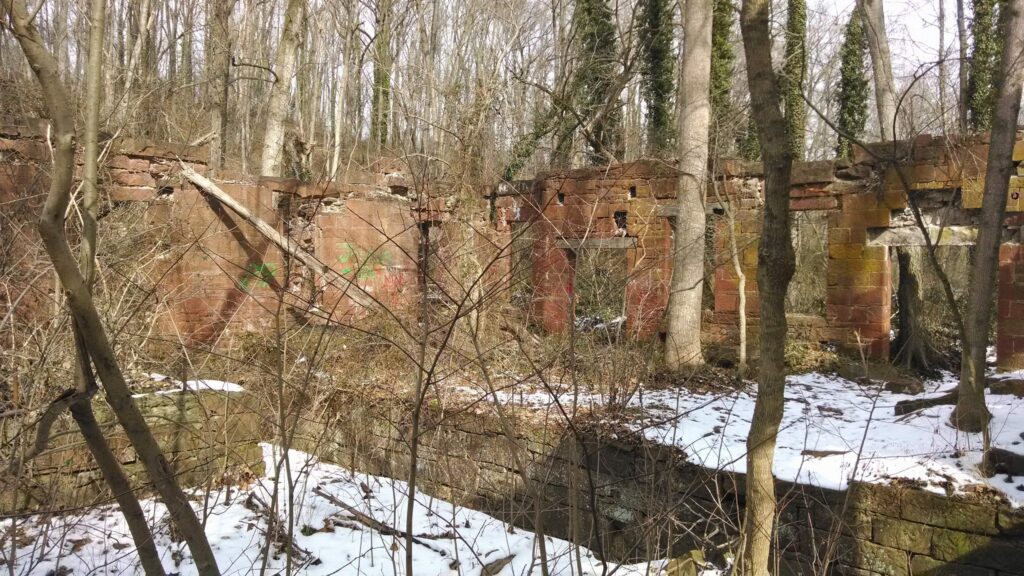
The Seneca Quarry mill, originally built in 1868 and closed down in 1901, is most famous for providing the red sandstone for the Smithsonian Castle. It has a long history that is well-documented by Garrett Peck and also covered by Rebecca Sheir on WAMU.
The Peter family suffered a decline in fortunes after the Civil War, and the quarry was purchased for $70,000 by the Seneca Sandstone Company in 1866. After 10 years of mismanagement and financial scandal, the company went bankrupt in 1876. It changed hands on two more occasions before eventually shutting down operations in 1901, when the quality of the stone declined significantly and redstone went out of fashion.
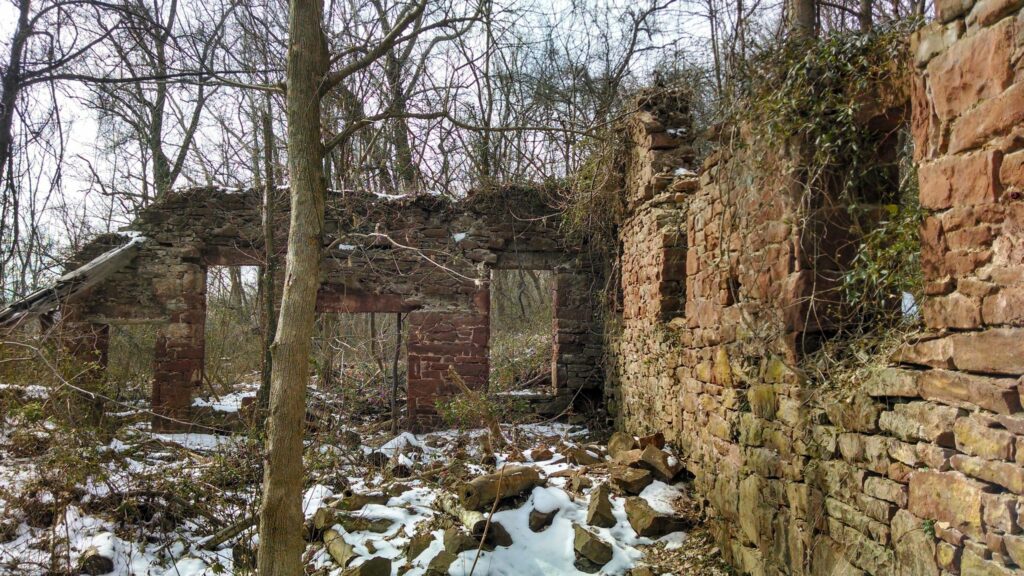
Visiting the Ruins Today
Today, the quarry sits in ruins, overgrown with sycamores, poplars, and wild rose. Visitors can walk through the woods in search of the property, which includes the red sandstone walls of the old stonecutting mill. There’s also the restored quarry master’s house, the quarry cemetery, and the various stone quarries themselves, all of which fall within the Chesapeake and Ohio Canal National Historical Park.
To find these historic ruins yourself, head out River Road and turn left on Riley’s Lock Road. Go to the end and park near the old house, then cross the aqueduct. After about 80-100 yards down the path, you’ll start to see the mill emerge through the trees.
I recently visited and took some photos to share. It’s an eerie, magical place frozen in time. The mill’s walls still stand tall, giving a sense of the building’s original scale and purpose. Inside, you can glimpse the internal ramps and machinery used to haul stones up from the quarry. Vines and overgrowth consume the stone, blending the structure back into nature.
Reflections on the Site’s Significance
Wandering through the mill’s ruins, I was struck by a sense of Washington DC’s history. The Seneca Quarry helped build landmarks like the Smithsonian Castle, shaping the capital’s early infrastructure. Now those days are gone, relegated to forgotten places like this abandoned mill.
It’s a surreal experience to admire the faded grandeur of the ruins surrounded by thick forest. I highly recommend checking out this fascinating destination so close to the city, but feeling like a world away. Let me know if you visit Seneca Quarry and share your thoughts!
